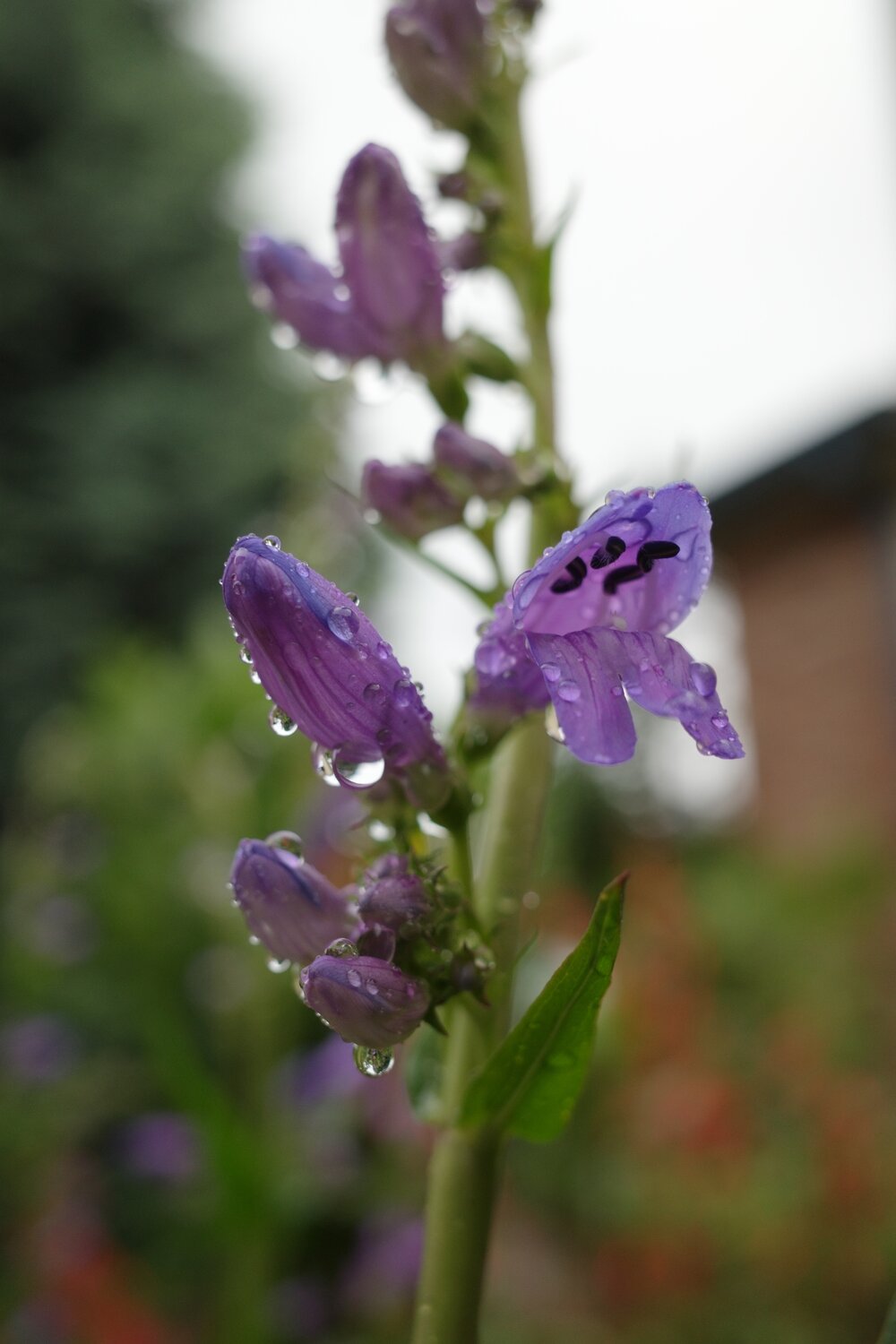In ‘Soil,’ Colorado poet Camille Dungy embraces the beauty of an ‘unruly’ yard

FORT COLLINS, Colo. — It was a typical day for June of 2023 when Rocky Mountain PBS met Camille Dungy at her home, which is to say it was raining. Constantly.
Rain fell around us as we sat under her covered porch, watching Dungy’s garden vibrate in the shower. Rain drops populated the petals of her penstemons and columbines while the surface of her birdfeeder pulsated in the rainfall.
When Dungy — a poet and professor at nearby Colorado State University — moved into her home 10 years ago, the yard was not the colorful garden of low-water, pollinator-friendly plants that it is now. Back then, she described the yard as “nothing but grass and hardscaping.”
“I was really pushing against that monochrome, which felt crucial to me coming out of our first Colorado winter,” Dungy said. “I really wanted some brightness and light as early and as broadly as possible.”
In May, Simon & Schuster published Dungy’s new book, “Soil: The Story of a Black Mother's Garden.”
In “Soil,” Dungy uses poetry and prose to document a span of seven years, starting in 2013 when she moved to Fort Collins with her family. The book follows her journey of changing her cookie-cutter, HOA-compliant yard into a colorful, wild oasis.
“I started with a maybe 20-square-foot plot in the front and just figured it was small enough. Maybe they wouldn't notice,” Dungy said of the HOA. “And it didn't make any sense to me that that would not be allowed because in this state we really need to be thinking about water resources, we need to be thinking about how to protect our pollinators. And this is a really simple way.”
Native plants are beneficial to homeowners and the environment in many ways. As the U.S. Forest Service details, native plants require less water — which saves money but is also important in Colorado's fight against drought — and they don't require fertilizer. They reduce air pollution, provide food for native species and, if nothing else, they're often nice to look at.
Dungy is a poet, so much of her writing has multiple meanings. In the beginning of “Soil” she recalls moving to Fort Collins from the Bay Area and noticing the “wide-flung whiteness” around her. It was a reference to the cottonwoods and the white petals of the surrounding hawthorns and chokecherries, but it also functioned as an observation of the demographics of Dungy’s new home. Nearly 85% of Fort Collins is White, according to the most recent U.S. Census data. Black residents make up just 1.5% of the population.
“As one of very few Black families in our northern Colorado community, we also became really interested in what it meant to diversify our landscape, both in our yard and inside our house,” Dungy said.


Dungy authored the bulk of her book at a difficult time: the year 2020.
“It's a very different book than I thought I was going to write … because come March of 2020, my daughter was home and I became responsible for overseeing her education,” Dungy said, referencing the COVID-19 pandemic. The summer of 2020 was also notable for the widespread racial justice protests following the murder of George Floyd. On top of that, Dungy had a scare with the Cameron Peak fire, the largest wildlife in state history. It came within 10 miles of her home.
“And so as I was writing a book about my garden, which is supposed to be this place of respite and beauty and maybe disconnection even, I continually wanted to make sure that I stayed present in what was happening at the time and really make the work of gardening, part of the work of healing,” Dungy said.
Part of that healing process, Dungy explained, was cultivating a “welcoming beauty.”
Her HOA, thankfully, changed its rules so that gardens like Dungy’s — once considered “unruly” by the association’s covenants — are permitted in the community. Now, a majority of her front, side-yard and backyard are reserved for her plants.
She takes pride in seeing other neighbors follow in her footsteps. And while individual action can feel futile in its ability to change the broader landscape with regards to our environmental crisis, Dungy said we need to start small.
“I see more and more of my neighbors embracing this kind of landscaping idea because it … looks attractive in a different way than they might have expected,” she said. “And so those are ways in which I can help and create a larger change by just starting in my own backyard.”
And her changes certainly don’t seem ineffectual — just look at what thrives in her yard.
“All kinds of damsel flies and dragonflies and native bees and birds that I don't see in other yards,” Dungy explained. “It's just a tiny little space. But that tiny little space made a refuge for hundreds of other living beings, right? And if each person creates such a tiny little space, more and more and more possibility happens.”
For a native plant guide specific to Colorado, click here.
Kyle Cooke is the digital media manager at Rocky Mountain PBS. You can reach him at kylecooke@rmpbs.org.
William Peterson is a senior photojournalist at Rocky Mountain PBS. You can reach him at williampeterson@rmpbs.org.